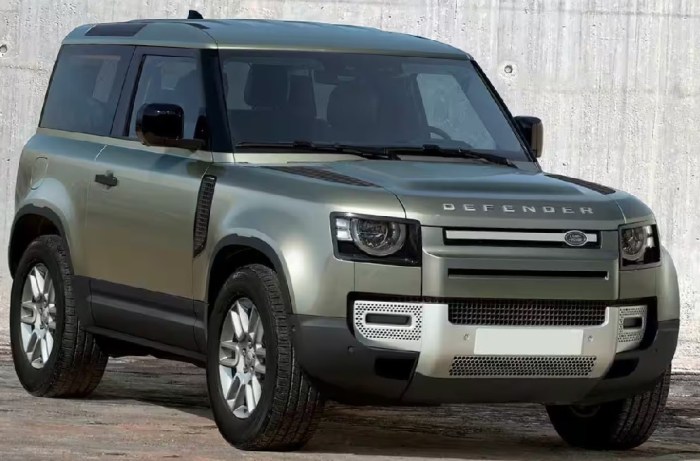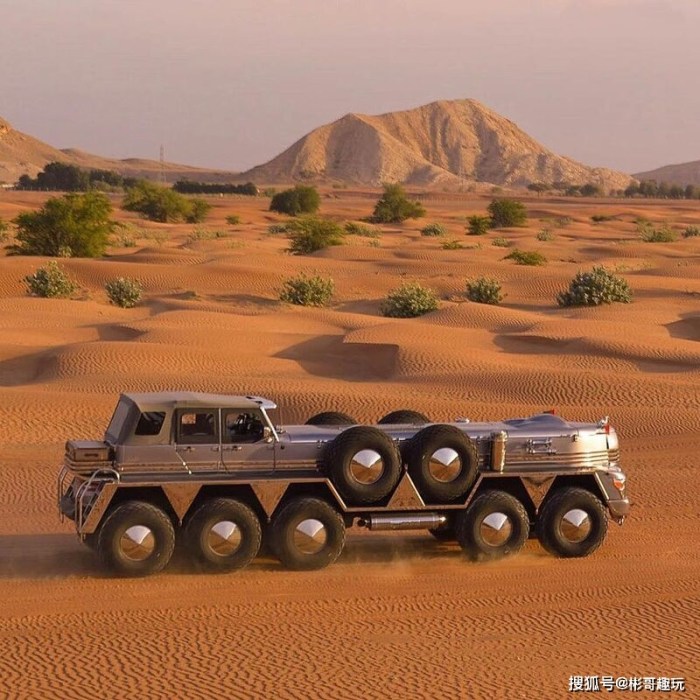Defining “Sand Land”

Sand land, also known as a desert, is a geographical region characterized by its arid climate, sparse vegetation, and predominantly sandy terrain. These environments are defined by their low precipitation levels, often receiving less than 10 inches of rainfall annually, which creates a harsh and unforgiving landscape.
Characteristics of Sand Land Environments
Sand land environments exhibit distinct characteristics that set them apart from other geographical regions. These characteristics include:
- Arid Climate: Sand lands experience extremely low rainfall, leading to dry and arid conditions. This lack of moisture results in a scarcity of vegetation and limited water resources.
- Sparse Vegetation: The limited rainfall and harsh conditions restrict plant growth, resulting in sparse vegetation cover. Only drought-tolerant species can survive in these environments, creating a landscape dominated by sand dunes and bare ground.
- Predominantly Sandy Terrain: Sand land environments are characterized by vast expanses of sand dunes, which are formed by the accumulation and movement of wind-blown sand. The presence of sand dunes creates a constantly shifting and unstable terrain.
- High Temperatures: Sand lands often experience extreme temperatures, with scorching heat during the day and cold nights. The lack of vegetation and cloud cover allows solar radiation to heat the ground intensely, leading to high temperatures.
- Wind Erosion: Strong winds play a significant role in shaping the landscape of sand lands. Wind erosion carries sand particles, creating sand dunes and constantly reshaping the terrain. This erosion can also pose challenges for vehicles and infrastructure.
Examples of Sand Land Locations
Sand land environments are found across the globe, with prominent examples including:
- Sahara Desert (North Africa): The largest hot desert in the world, covering over 9 million square kilometers, with vast stretches of sand dunes and limited vegetation.
- Arabian Desert (Middle East): A vast desert covering parts of Saudi Arabia, Oman, Yemen, and other countries, characterized by sand dunes, rocky plateaus, and oases.
- Atacama Desert (Chile): One of the driest deserts on Earth, located in South America, with extremely low rainfall and unique adaptations of flora and fauna.
- Gobi Desert (China and Mongolia): A vast desert in Asia, characterized by sand dunes, rocky plateaus, and cold winters, with a diverse ecosystem.
- Mojave Desert (United States): A desert located in the southwestern United States, known for its Joshua trees, sand dunes, and unique wildlife.
Challenges and Considerations for Vehicle Operation in Sand Land
Operating vehicles in sand land environments presents unique challenges and considerations due to the harsh conditions and unstable terrain. These include:
- Sand Traction: Sand is a loose and unstable surface, making it difficult for vehicles to maintain traction. Tires can easily sink, requiring specialized tires or techniques to maintain control.
- Sand Drifting: Strong winds can create sand drifts, which can block roads and hinder vehicle movement. Navigating through sand drifts requires careful maneuvering and knowledge of the terrain.
- Heat Stress: Extreme temperatures can affect vehicle performance and driver safety. Overheating can damage engines, while prolonged exposure to heat can lead to dehydration and other health issues.
- Limited Infrastructure: Sand land environments often lack developed infrastructure, such as roads, fuel stations, and repair facilities. This can pose logistical challenges for vehicle operation and maintenance.
- Navigation: The constantly shifting terrain and lack of landmarks can make navigation difficult. GPS systems may be unreliable in areas with limited satellite coverage.
Vehicle Types for Sand Land

Navigating the treacherous terrain of Sand Land requires vehicles specifically designed to handle the unique challenges presented by loose, shifting sand. These vehicles must possess exceptional traction, maneuverability, and durability to overcome the demanding conditions. The three primary vehicle types best suited for traversing Sand Land are:
All-Terrain Vehicles (ATVs), Top 3 best vehicles in sand land
ATVs offer a versatile and agile solution for navigating sand dunes and challenging terrain. Their compact size and lightweight design allow them to easily maneuver through tight spaces and climb steep inclines. However, their limited payload capacity and open design may limit their suitability for longer journeys or carrying heavy equipment.
Advantages
- High maneuverability: Their compact size and low center of gravity make them highly maneuverable, allowing them to navigate tight spaces and steep inclines.
- Excellent traction: Large, knobby tires provide excellent traction on loose sand, ensuring optimal grip and control.
- Lightweight design: ATVs are relatively lightweight, making them easier to maneuver and less likely to sink in soft sand.
- Versatility: ATVs can be equipped with a variety of accessories, including winches, plows, and trailers, enhancing their functionality for diverse tasks.
Disadvantages
- Limited payload capacity: ATVs are typically designed for one or two passengers and have a limited cargo capacity.
- Open design: The open design of ATVs exposes riders to the elements, potentially leading to discomfort or injury.
- Reduced stability: ATVs can be less stable than larger vehicles, particularly when traversing uneven terrain.
- Limited range: ATVs generally have a shorter range compared to larger vehicles, requiring more frequent refueling.
High-Mobility Multipurpose Wheeled Vehicles (HMMWVs)
HMMWVs, commonly known as Humvees, are robust, four-wheel drive vehicles designed for military operations. Their powerful engines and durable construction make them ideal for navigating challenging terrain, including sand dunes. HMMWVs offer superior payload capacity and protection compared to ATVs, making them suitable for transporting personnel and equipment over long distances.
Advantages
- Exceptional durability: HMMWVs are built with a robust frame and suspension system, capable of withstanding harsh conditions and heavy loads.
- High ground clearance: Their substantial ground clearance allows them to navigate over obstacles and uneven terrain with ease.
- Powerful engine: HMMWVs are equipped with powerful engines that provide ample torque and horsepower, enabling them to overcome challenging terrain.
- Ample payload capacity: HMMWVs can accommodate multiple passengers and a significant amount of cargo, making them suitable for transporting personnel and equipment.
Disadvantages
- High fuel consumption: Their powerful engines and heavy weight contribute to higher fuel consumption compared to smaller vehicles.
- Limited maneuverability: HMMWVs are larger and heavier than ATVs, making them less maneuverable in tight spaces and on steep inclines.
- High maintenance costs: HMMWVs require regular maintenance and repairs, which can be expensive.
- Reduced fuel efficiency: Their large size and weight contribute to lower fuel efficiency, requiring frequent refueling.
Dune Buggies
Dune buggies are lightweight, open-wheeled vehicles specifically designed for sand dune driving. Their low center of gravity, wide wheelbase, and large, knobby tires provide exceptional traction and maneuverability on loose sand. Dune buggies offer an exhilarating driving experience and are ideal for recreational activities, but their lack of protection and limited range may limit their suitability for long-distance travel or carrying heavy loads.
Advantages
- Exceptional maneuverability: Their low center of gravity, wide wheelbase, and large tires provide exceptional maneuverability and stability on sand dunes.
- High ground clearance: Their high ground clearance allows them to navigate over obstacles and uneven terrain with ease.
- Lightweight design: Dune buggies are relatively lightweight, making them less likely to sink in soft sand and easier to maneuver.
- Thrilling driving experience: Dune buggies offer an exhilarating and adrenaline-pumping driving experience.
Disadvantages
- Limited protection: Dune buggies offer minimal protection from the elements and potential hazards, exposing riders to the environment.
- Limited payload capacity: Dune buggies typically have a limited payload capacity, making them unsuitable for transporting heavy loads.
- Short range: Their small fuel tanks and high fuel consumption result in a shorter range compared to larger vehicles.
- Lack of safety features: Dune buggies often lack safety features such as roll cages and airbags, increasing the risk of injury in case of an accident.
Top 3 Best Vehicles for Sand Land
Navigating the vast and unforgiving landscapes of Sand Land requires a vehicle that can handle the extreme conditions. From scorching heat and shifting sands to treacherous dunes and potential sandstorms, the right vehicle is crucial for safe and enjoyable travel. This article will explore the top 3 best vehicles for Sand Land travel, taking into account factors such as off-road capability, durability, and fuel efficiency.
Top 3 Best Vehicles for Sand Land Travel
The following table showcases the top 3 best vehicles for Sand Land travel, highlighting their key features and manufacturers:
| Rank | Vehicle Name | Manufacturer | Key Features |
|---|---|---|---|
| 1 | Toyota Land Cruiser | Toyota | Powerful engine, durable construction, advanced four-wheel drive system, high ground clearance, and exceptional off-road capabilities. |
| 2 | Ford F-150 Raptor | Ford | High-performance engine, robust suspension system, specialized off-road tires, and advanced technology features designed for sand driving. |
| 3 | Jeep Wrangler Rubicon | Jeep | Powerful engine, rugged design, disconnecting front sway bar, and advanced four-wheel drive system with locking differentials for superior traction in sand. |
These vehicles offer a combination of power, durability, and off-road capabilities, making them ideal for conquering the challenges of Sand Land.
Considerations for Vehicle Modification
Sand Land presents unique challenges for vehicles, demanding modifications to optimize performance and ensure a smooth and enjoyable journey. The goal is to enhance traction, improve suspension, and optimize engine performance to conquer the demanding terrain.
Traction Enhancement
Modifications aimed at improving traction are crucial for navigating the loose and shifting sands of Sand Land. These modifications enhance grip and prevent the vehicle from getting stuck.
- Tire Selection: Wide, low-pressure tires with aggressive tread patterns are essential for maximizing contact with the sand. These tires distribute weight more evenly, increasing traction and reducing the risk of sinking. Popular choices include all-terrain tires, sand tires, and specialized dune tires, each offering varying degrees of grip and durability.
- Tire Inflation: Lowering tire pressure significantly improves traction by increasing the tire’s contact patch with the sand. This allows the tire to “float” on the sand, reducing sinking. The optimal pressure varies depending on the tire size, vehicle weight, and sand conditions.
- Differential Lockers: Differential lockers ensure that power is distributed evenly to both wheels on an axle, enhancing traction on loose surfaces. When engaged, they lock the differential, preventing the wheel with less traction from spinning while the other wheel maintains grip.
- Anti-Spin Devices: Electronic traction control systems and limited-slip differentials help to prevent wheel spin by applying brakes to the spinning wheel and transferring power to the wheel with more traction. These systems provide an extra layer of control in challenging sand conditions.
Suspension Optimization
A well-tuned suspension system is vital for navigating the unpredictable terrain of Sand Land. Modifications enhance ground clearance, improve ride comfort, and provide greater control over the vehicle.
- Lift Kits: Increasing ground clearance with a lift kit is essential for avoiding obstacles and preventing damage to the vehicle’s undercarriage. Lift kits involve raising the suspension components, providing more space between the vehicle and the ground.
- Shock Absorbers: Upgraded shock absorbers with longer travel and higher damping rates improve handling and stability on uneven terrain. They absorb bumps and jolts, reducing strain on the suspension components and enhancing passenger comfort.
- Coil Springs: Replacing stock coil springs with heavier-duty units improves the vehicle’s ability to handle the weight of the vehicle and cargo while navigating rough terrain. They provide better support and prevent sagging under load.
- Long Travel Suspension: This type of suspension system uses longer travel axles and shocks, allowing for greater wheel articulation and increased ground clearance. It is ideal for extreme off-road conditions and can significantly enhance the vehicle’s ability to navigate challenging sand dunes.
Engine Performance Enhancement
Modifications aimed at improving engine performance are crucial for maintaining power and speed in the challenging conditions of Sand Land. These modifications increase power output, improve fuel efficiency, and enhance the vehicle’s ability to overcome obstacles.
- Engine Tuning: Reprogramming the engine control unit (ECU) can optimize engine performance by adjusting fuel and ignition timing, resulting in increased horsepower and torque.
- Air Intake Modifications: Upgrading the air intake system with a cold air intake or a high-flow filter improves airflow to the engine, increasing power and efficiency.
- Exhaust Modifications: Replacing the stock exhaust system with a high-flow exhaust system reduces backpressure and increases engine power. However, it’s important to note that this modification may increase noise levels.
- Superchargers or Turbochargers: These forced induction systems increase engine power by forcing more air into the combustion chamber, leading to increased horsepower and torque. They are effective for enhancing performance in demanding sand conditions.
Safety and Best Practices: Top 3 Best Vehicles In Sand Land
Driving in sand land presents unique challenges, and it’s crucial to prioritize safety. This section Artikels essential tips for navigating these terrains safely, including vehicle preparation and maintenance, as well as recommended equipment and supplies.
Vehicle Preparation and Maintenance
Proper vehicle preparation and maintenance are essential for safe sand land travel. A well-maintained vehicle is less likely to break down, and regular servicing ensures optimal performance in demanding conditions.
- Regular Servicing: Adhere to the manufacturer’s recommended service schedule for oil changes, filter replacements, and other routine maintenance. This ensures optimal engine performance and prevents unexpected breakdowns.
- Tire Pressure: Inflate tires to the recommended pressure for sand driving, typically lower than on-road pressure. This increases tire contact with the sand, improving traction and preventing tire damage.
- Fluid Levels: Check and top off all fluid levels, including engine oil, coolant, brake fluid, and power steering fluid. Low fluid levels can lead to overheating, brake failure, or steering issues.
- Spare Parts: Carry a spare tire, jack, and lug wrench, as well as other essential spare parts, such as belts, hoses, and fuses. This allows for quick repairs in case of unexpected breakdowns.
Recommended Equipment and Supplies
Having the right equipment and supplies can make all the difference in a sand land adventure. These items can provide safety, comfort, and peace of mind.
- Recovery Gear: Carry a shovel, tow strap, and traction boards to assist in recovering your vehicle if it gets stuck. These tools are invaluable for self-rescue and can prevent damage to your vehicle.
- Navigation Tools: A GPS device, compass, and map are essential for navigating unfamiliar terrain. They help you stay on track and avoid getting lost, especially in remote areas.
- First-Aid Kit: A comprehensive first-aid kit is crucial for treating minor injuries. It should include bandages, antiseptic wipes, pain relievers, and other essential supplies.
- Water and Food: Pack enough water and non-perishable food for the duration of your trip. Staying hydrated and nourished is essential for maintaining energy levels and preventing dehydration.
- Communication Devices: Carry a satellite phone or a two-way radio for communication in case of emergencies. These devices allow you to contact help if you become stranded or experience a breakdown.
Safety Tips for Driving in Sand Land
Driving in sand land requires specific driving techniques and safety precautions. Adhering to these tips can help you navigate these terrains safely and avoid potential hazards.
- Drive Slowly: Avoid excessive speed, as it can lead to loss of control and make it difficult to recover from a skid. Maintaining a slow and steady pace allows you to react to changing conditions.
- Avoid Sudden Movements: Avoid abrupt acceleration, braking, or steering maneuvers. These movements can cause the vehicle to lose traction and become unstable, increasing the risk of getting stuck or rolling over.
- Keep an Eye on the Terrain: Be aware of the sand conditions and adjust your driving style accordingly. Loose sand requires lower speeds and careful maneuvering, while packed sand allows for slightly higher speeds.
- Avoid Deep Sand: If possible, avoid driving in deep sand, as it can make it extremely difficult to recover your vehicle if it gets stuck. Choose well-established tracks or paths with firmer sand.
- Stay on Designated Tracks: Stick to designated tracks or trails whenever possible. These routes are typically maintained and offer a safer and more efficient way to navigate the terrain.
- Travel with Others: It’s always recommended to travel with others in case of an emergency. This provides additional support, resources, and manpower if you encounter difficulties.
Top 3 best vehicles in sand land – So, whether you’re planning your next desert adventure or simply curious about the vehicles that conquer the dunes, this guide has equipped you with the knowledge you need. Remember, choosing the right vehicle is just the first step. Proper preparation, understanding the unique challenges of sand land, and practicing safe driving techniques are essential for a successful and enjoyable experience. Now, get ready to conquer the dunes and discover the magic of sand land!
Navigating the dunes of a sand land requires a vehicle that can handle the shifting terrain. While a dune buggy might be the first thing that comes to mind, don’t underestimate the power of a well-equipped 4×4 or even a sturdy ATV. Speaking of power, if you’re looking for a serious edge in Destiny 2, check out the monte carlo destiny 2 guide best catalyst for a weapon that packs a punch.
Back to those sand lands, remember to choose a vehicle that fits your needs and the specific challenges of the terrain.

